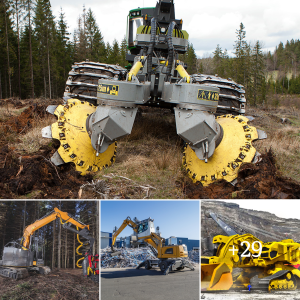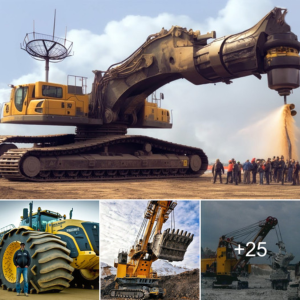A frozen lake known to many as a beautiful tourist destination with picturesque scenery, located at an altitude of over 5000 meters above sea level on the Himalaya peak, transforms into a completely different spectacle each summer when the ice melts: a mass grave of more than 800 skeletons dating back thousands of years. What happened here?

The place being referred to is Roopkund Lake, now called Skeleton Lake, also known as the Lake of Skeletons (locals call it the “Mystery Lake”). It is a glacial lake in the Uttarakhand state of India, situated in the lap of the Trishul massif, and is famous for the hundreds of human skeletons found at the lake.
A ‘ghastly scene’
This place is uninhabited and lies at the bottom of a small valley in the Himalayas at an altitude of approximately 5,029 meters (16,499 feet). The lake is very shallow, with a maximum depth of about 2 meters, surrounded by glaciers and snow-covered mountains.
It is a natural wonder, making it an attractive and popular destination for adventurous tourists who want to conquer and admire it. Every May, when the ice melts, the lake’s shallow bottom reveals its true nature with hundreds of mysterious skeletons appearing.

In 1942, this astonishing mystery was discovered. More than 200 human skeletons were found in one corner of the lake bed when the summer ice melted that year, revealing the remaining skeletons, which floated to the surface and lay scattered around the lake. Something terrible must have happened here, as most of these skeletons were still intact.
Subsequently, further examination and counting revealed that there were over 800 human skeletons of various sizes within Roopkund Lake. Immediately, this news spread and caused a worldwide sensation. Since Roopkund Lake is uninhabited, the existence of a massive lake of skeletons amidst the vast wilderness is indeed an astonishing phenomenon.

Many assumptions were made.
These skeletons are very old. Their skin, hair, and bones were preserved in dry and cold air conditions, so they remain almost intact. However, no one has yet determined where they came from or how long they have been there.
Nor could anyone conceive of what caused more than 800 people to die in the same place in this valley. Various hypotheses have been proposed, such as an epidemic, a landslide, or a mass ritual suicide. For decades, despite extensive research, no one has been able to unravel the secrets of Skeleton Lake.

Some suggested that during wartime, these were the remains of Japanese soldiers who died while fleeing to India. The British government immediately formed a group of investigators to determine the truth about these skeletons. However, after investigation, they stated that the bones were not those of Japanese soldiers, as they predated the war.
Many scholars and British investigative teams believed that the skeletons belonged to General Zorawar Singh of Kashmir (the Indian subcontinent) and his men. General Zorawar Singh’s army was thought to have lost its way and perished in the Himalayas while returning from the Tibetan war in 1841. However, radiocarbon testing of the skeletons in the 1960s disproved this hypothesis.
![[hinhxam]727[/hinhxam]](https://cdn.artifactinsights.com/2024/06/lake-of-skeletons-32-31513-Roopkund-The-Skeleton-Lake.webp)
Additionally, there are mysterious legends. In ancient times, the king of Kannauj, along with his queen, children, and courtiers, ventured into the Himalayas to hold a lavish feast. The king and his entourage’s revelry offended the goddess Nanda Devi because the Himalayan peaks were sacred and not meant for pleasure. Enraged by their sacrilegious actions, the goddess Nanda Devi conjured a massive hailstorm, which descended upon the arrogant king’s feast.
Due to extremely difficult and complex research conditions, most approaches to the enormous skeleton lake have only involved observing and exploring it when the ice melts.

It wasn’t until 2003 that scientists from the Archaeological Department of Deccan College in India could collaborate with German scientists and the National Geographic Channel from the United States to film and study Skeleton Lake. In 2007, using modern technical equipment, scientists reached conclusions, and the mysteries of Skeleton Lake began to unfold.
The real cause
DNA testing was conducted on 31 skeletons, which still had visible heads, hair, and nails. These samples were brought to the molecular biology research center in India for examination. After analysis, scientists discovered a strange fact: all these individuals had small bone protrusions on their foreheads, a characteristic found only in residents of Maharashtra, central southern India.

DNA analysis revealed that among the 31 skeletons, 3 samples had a unique genetic mutation not seen elsewhere in the world except among the migrant group from Maharashtra, India. These three samples had identical mutations, indicating that these individuals belonged to the same family and were residents of Maharashtra, India. Thus, these people were related by blood.
Furthermore, among the 800 skeletons in the lake, scientists discovered many interesting details. The 800 skeletons were divided into two main groups: one group consisted of shorter individuals, while the other group was of significantly taller individuals. These skeletons dated back to around 850 AD, which is more than 1,000 years ago.

The final conclusion was that the over 800 individuals in Roopkund Lake were Indian pilgrims. The shorter individuals could have been local residents or guides for the pilgrimage group.

DNA examination and skull fractures revealed that all individuals had died from a fatal blow to the back of the head by a round object the size of a ball. It is hypothesized that an unexpected hailstorm with extremely large hailstones (possibly traveling at speeds over 160 km/h) struck, leaving them no time to find shelter, resulting in their deaths. A few of them were injured and later died from starvation and cold.
These thousand-year-old skeletons remained intact because they were preserved in the ice and snow at the low temperatures of Roopkund Lake. To date, this conclusion is considered the most reasonable explanation.

The mysteries of the enormous skeleton lake on the roof of the world continue to attract many people. Moreover, Roopkund Lake appears only once a year, making it even more enticing for those who wish to explore and witness this unique lake.
As a sacred place where hundreds of people met a tragic death due to a natural disaster, it is also regarded as a prayer site by many, leading to concerns about the preservation of the skeletons.
Many tourists visit to see the remains and some even take bones with them when they leave. Therefore, efforts are needed to protect this area as an eco-tourism site to ensure the remains are not damaged…





